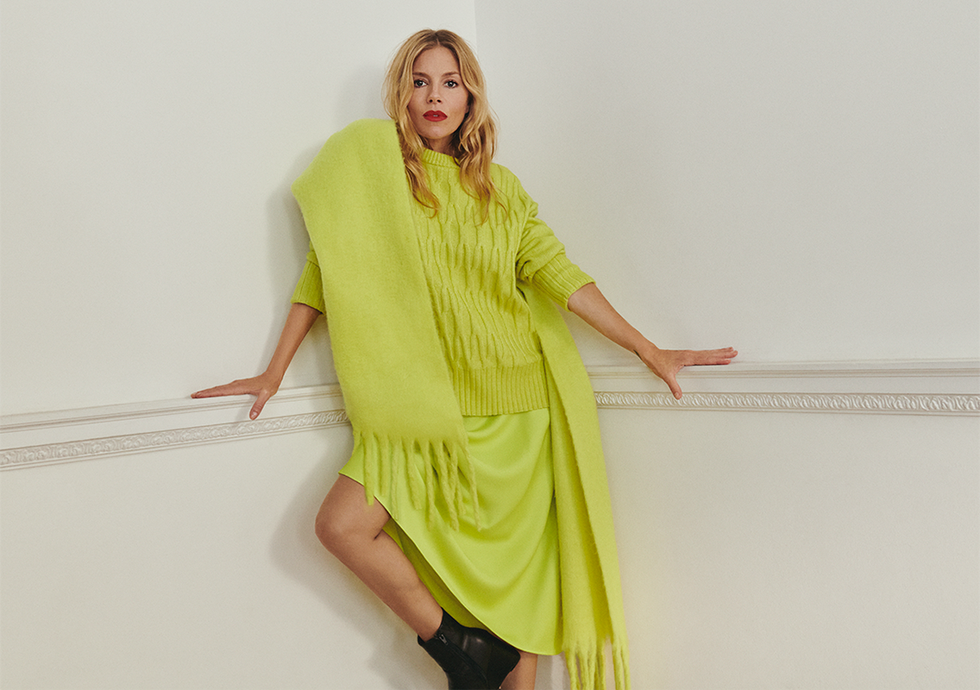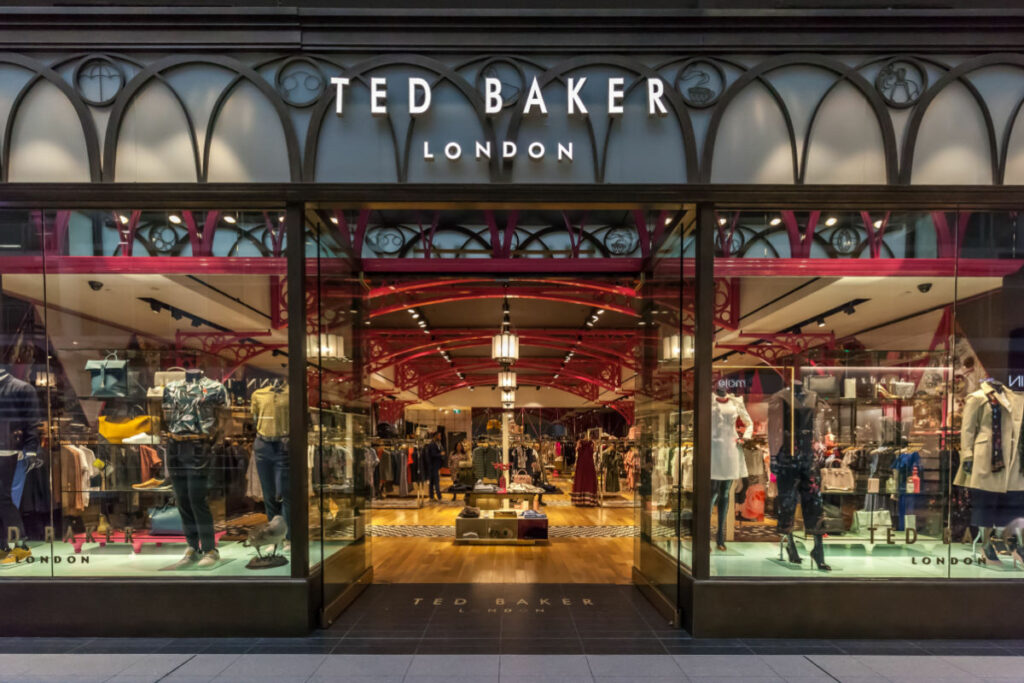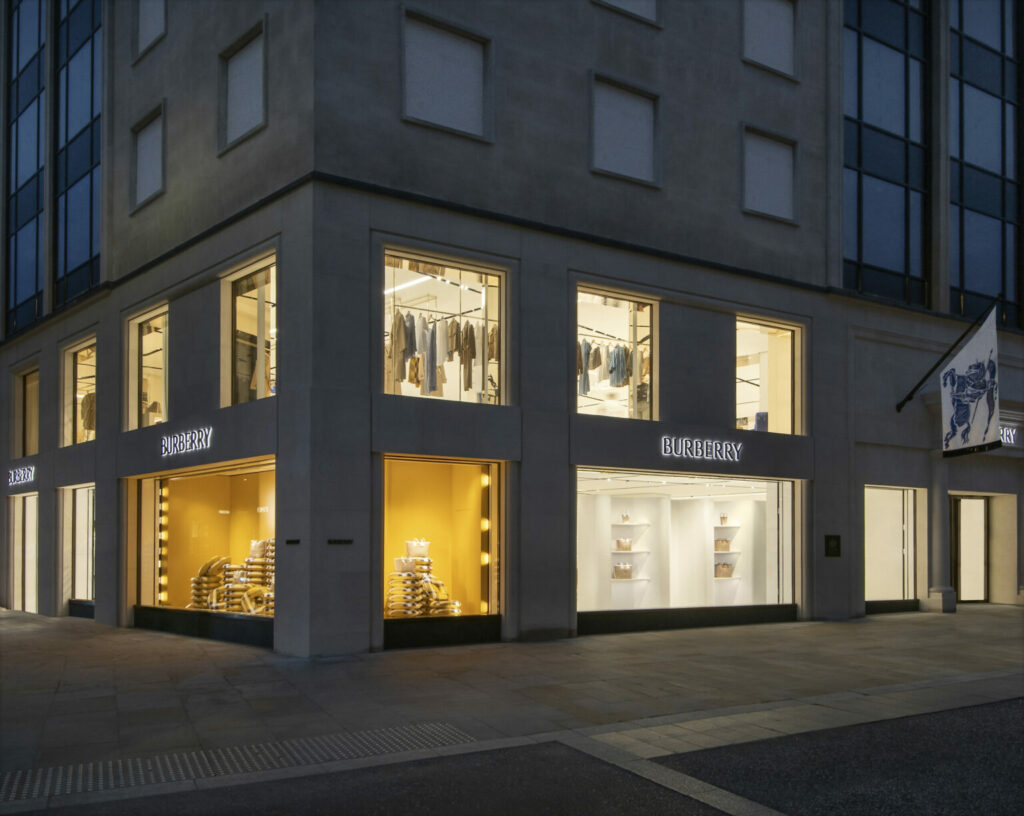One of the good news stories of 2023 has been the resurgence of M&S, which just last month hailed a better-than-expected 75% rise in first-half profit.
A big driver of his performance has been the long-awaited revival of its fashion arm.
In fact M&S clothing is – dare we say it – cool again. With stylish celebrity ambassadors and a booming social media channel, the retailer’s designs are a fry cry from the frumpy fashion that filled its stores not so long ago.
And it is paying off. M&S achieved a market leading position in womenswear this summer, taking a 9.5% slice of the UK’s clothing and footwear market, marking the first time it took the number one spot for four years.
Sienna Miller – who has previously starred in campaigns for the likes of Burberry, Hugo Boss, and Vogue Eyewear – fronting its Autumn campaign this year just goes to show how far the retail titan has come.
However, it’s not all about womenswear. In what the retailer called a “significant milestone for the category”, this autumn M&S unveiled its first dedicated menswear campaign since 2015.
Following the launch, menswear director Mitch Hughes said the business wanted to “show up with confidence” and “really reinforce” the journey its been on to elevate its style credentials.
But how did M&S manage to win over fashion shoppers amid intense competition across the market?
Better products and a revamped team
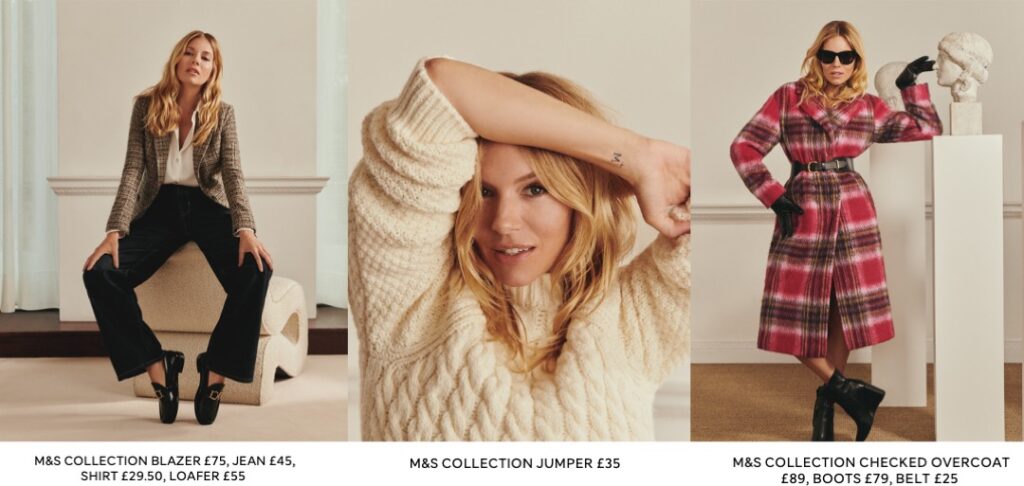
It’s a been a while since M&S has been regarded as trendy. While its hero products such as winter coats and staples such as black trousers have remained popular, the retailer has failed to gain widescale appeal for more fashion-led pieces.
M&S’ big challenge was that its target market was getting increasingly older while it was failing to attract younger shoppers amid fears it would alienate its core customer base.
But it’s managed to overcome this hurdle.
Senior apparel analyst at GlobalData Pippa Stephens explains that its “ranges now appealing to younger shoppers than they did previously due to better incorporation of fashion trends”.
M&S chief executive Stuart Machin hails the retailer’s clothing ranges as “so much better”, and says the “product’s style, quality and value are outstanding” in is most recent season.
With a refreshed focus on “must-have” stylish products, M&S is showcasing these pieces that have been designed to be dressed up or down through The Edit section on its website and in stores.
Peel hunt analyst John Stevenson agrees with Machin that M&S has made major gains across its clothing arm simply due to the fact that “the product is better”.
He says that just a few years ago you’d walk into a store to “a sea of black trousers” with thousands of different cuts of essentially the same product, with “nothing to inspire” shoppers.
As well as improving designs, M&S has focused on cutting the breadth of its offer, which – as Stevenson says – had become unwieldy.
Stevenson adds: “If you go back to the M&S of old, it was just too much – literally too much breadth and not enough depth either.”
Last year, the retailer heralded that the shape of its buy had improved by removing duplication and deepening core products.
It used the example of womenswear sales in the first half of last year jumping 15%, despite the retailer having 5% fewer options.
In the black trousers that Stevenson talks about, the number of options have reduced by 50% in recent years with shoppers reacting positively to its more curated offering.
The business also had 276 lines achieving sales of more than £1m during the same period, with sales in these lines up 25% year on year.
This trend has continued, wit the group flagging that it had “backed lines with authority across core and seasonal product”.
It’s a far cry from a few years ago when M&S buyers lacked the confidence to buy in bulk.
Back in 2019, former chief executive Steve Rowe pointed to a jeans promotion the retailer had ran in February, fronted by TV presenter Holly Willoughby, saying: ‘We sold out. We didn’t buy enough. And that led to us having some of the worst availability in casual clothes I’ve seen in my life.”
Stevenson says: “How can you not back the stuff that’s essentially headlining major campaign?”
“At the heart of what it’s done – got rid of the duplication, got rid of the excess options, and is now actually backing itself with a bit of depth on key products.”
A new M&S clothing team
Another key factor in its transformation has been the team running the ship.
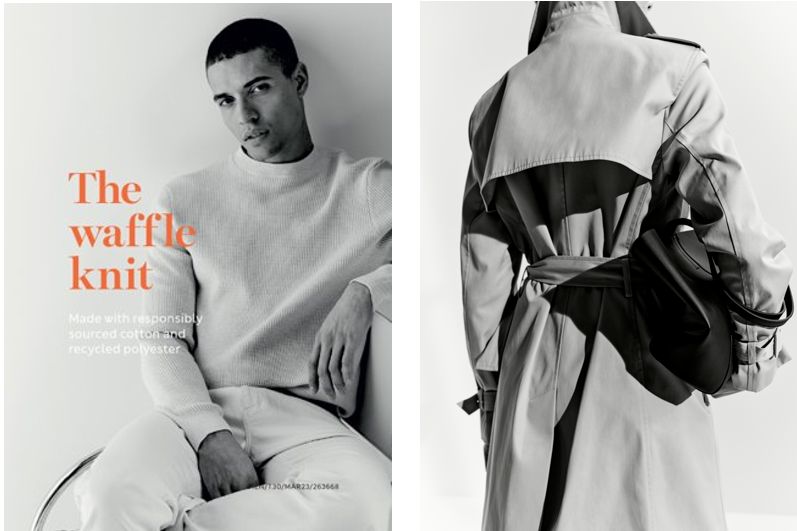
Back in 2019 M&S drafted in Tesco F&F Clothing CEO Richard Price as managing director for clothing and home.
Price had previously worked at M&S as trading director from 2005 until 2012 but left because it “was drifting in the wrong direction”.
Upon rejoining the retailer, he said the team had a “real chance to make it special again”.
Fast-forward to 2023 and his ambitions for doubling down on core categories and betting on full-price sales for the autumn/winter 23 season are clearly working.
The retailer was one of the last on the high street to begin discounts with its Summer sale launching in August.
Former chief executive Rowe had said on multiple occasions that the retailer was too promotional – meaning shoppers had come to expect discounts.
Meanwhile, the retailer has put renewed focus on categories it leads on such as denim, where it now holds 18% market share – the highest it has ever had.
It sold almost one in five pairs of jeans bought by women last year, making it more popular than any other retailer. It now stocks styles never sold before at M&S, such as wide leg, mum jeans and boyfriend jeans.
It is not just Price driving this change at M&S.
The retailer promoted former Topshop fashion director Maddy Evans to director of womenswear last year.
Evans is said to have made a big impact in terms of changing customer perceptions of the retailer’s womenswear department.
Targeting the “modern mainstream” shopper, she has managed to find the sweet spot with items that both mum and daughter want to wear by focusing on an ageless core customer.
Evans told The Times earlier this year that this shopper “wants to buy clothes which make her feel confident and relevant in front of her friends and family and which gives her style credibility and good value without chasing every trend”.
Better stores
Another factor in its turnaround is provided more inspirational settings for customers to shop.
At the start of the year M&S revealed a near £500m investment in bigger, better stores across the UK, with 20 new stores to be opened in the next financial year.
The move came as it targeted a store estate fit for the future alongside ensuring a seamless experience for its customers.
Globaldata retail senior analyst Pippa Stephens says M&S made the right move by heavily investing in its stores, as consumers increasingly appreciate the experience of shopping in-person again post-pandemic.
It had its biggest-ever month of store openings in November, but is also remodelling existing locations, which she called “a much needed investment as many of its older stores look tired and outdated”.
One of the five new flagships it opened was in Birmingham Bullring and the changes made to the interior are impossible to miss.
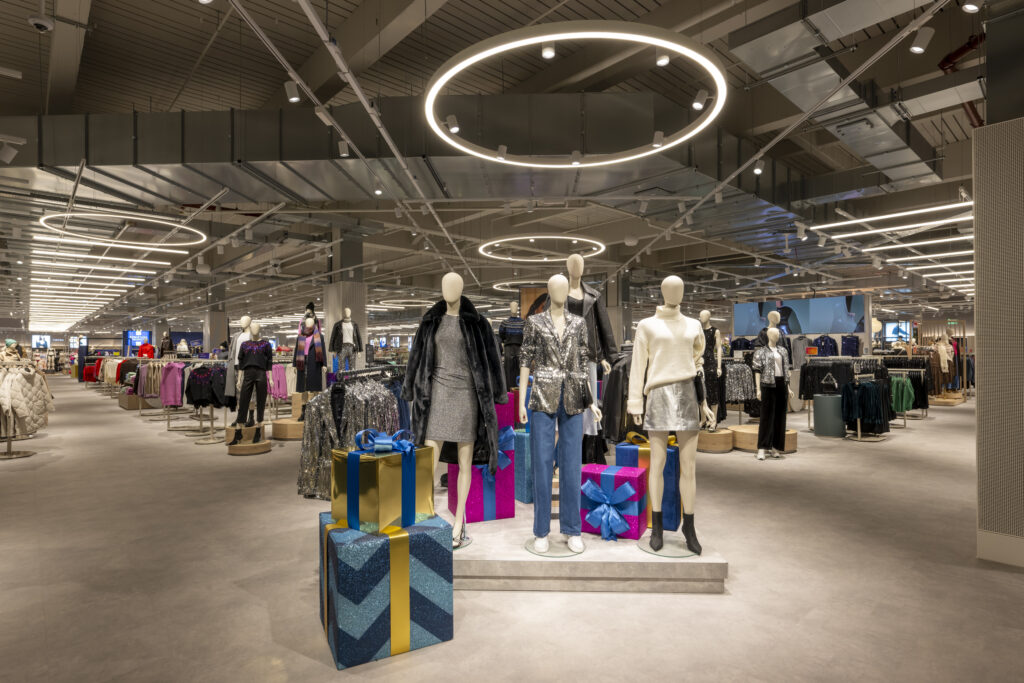
Gone are the rows of workwear found in M&S stores of old. Instead visual merchandising has transformed the store, with dynamic displays using neon-lit areas to spotlight customer favourites within its clothing department.
Subscribe to Retail Gazette for free
Sign up here to get the latest news straight into your inbox each morning
Third-party brands at M&S
Throughout the course of the year M&S has increased the number of high-street brands it stocks on its online ‘Brands at M&S’ platform alongside its own clothes in a bid to entice shoppers away from high-street rivals Next and John Lewis.
The retailer aims to increase the number of third-party brands it sells to 100 from 73, with hopes it will significantly boost sales.
The platform already houses a host of popular brands including Nobody’s Child, Crocs, Superdry, and Clarks.
As it ramps up its offer, Stevenson says its clear to see the advantage brands get by accessing the retail giant’s customer base via its website.
Despite concerns about cannibalization, when speaking to Retail Gazette last year, M&S director of online and omnichannel Stephen Langford stressed that he wasn’t not concerned about putting new brands in front of its shoppers.
“Ultimately, customers can go anywhere to buy the other brands, but they choose to come to us because we have something unique to offer them,” he explained.
“The ability for us to be able to create more of a one-stop-shop experience online for our customers is pretty attractive, and a win-win. We have a careful selection of brands that we believe fit with our brand credentials, and therefore we can provide our existing customers a better experience.
“We want customers to choose us as their number one online destination for clothing, home and gifting.”
Stevenson notes that “most of the people that are shopping brands are also putting M&S items in the basket too”.
As part of its ‘Brands at M&S’ strategy and ongoing investment into growth categories, M&S bought fast-growing online retailer The Sports Edit in 2022 and brought it onto its own website in February this year.
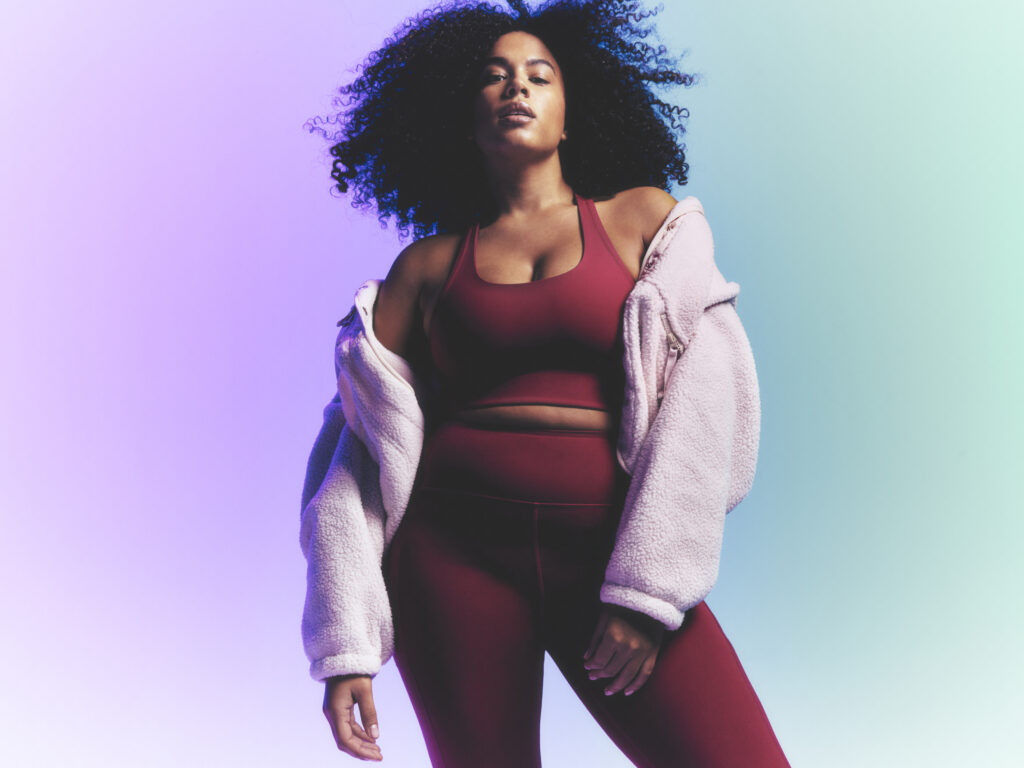
In September, the retailer added Adidas and Sweaty Betty to the site with over 150 products across the two sportswear brands available to shop.
More recently, the business revealed it would expand the presence of Jaeger, which it bought in 2021, by introducing the brand to an additional 20 stores across the UK.
Jaeger has played a role in the retail stalwart’s campaign to revive its fashion credentials, with customers seeing M&S clothing as a more fashion-forward division, with an array of brands you wouldn’t necessarily associate with the business.
As the business looks to elevate its offer, Jaeger products, which are currently stocked in 26 shops, have been expected to nine more M&S stores this month and a further 11 in the New Year, which Stephens says will no doubt help it “attract even more premium shoppers”.
Conquering the social media game
In recent years, M&S has upped its social media strategy, which is helping it attract a younger customer.
The retailer boasts 2m followers on Instagram and while its TikTok account seemingly lags behind with 61.6K, various products have gone viral on the social media app, resulting in sold-out items thanks to mass engagement.
@ohmyroch I got the viral @marksandspenceruk bag! What do we think ??? #celinedupe #marksansspencers #marksandspencerbag #celinebag #rundontwalk #ukblackgirltiktok #ukblackgirl #ukfashionblogger #celine
Kantar senior consultant Sophie Carroll says M&S’ social media strategy has played a pivotal role in revitalising the clothing arm.
She adds that TikTok has proven to be an effective platform for bringing the retailer’s products to life, engaging with a wider and younger audience, and effectively communicating with shoppers.
According to The Guardian, M&S garners around three million views on its store social media pages every week, with its stores in Yate, Bexhill and Gloucester all generating more than 500,000 views a month.
While its M&S Romford account, which has over 94,000 followers is another stand-out store, with some of its video racking up over 300,000 views on TikTok.
TikTok aside, M&S has also ramped up influencer partnerships across Instagram, using a variety of micro and macro-influencers with expertise in fashion, beauty, and homewares, including Made In Chelsea’s Binky Felstead and Digby Edgley.
View this post on Instagram
By using targeted social media campaigns and collaborations with diverse influencers, Carroll says the retailer has further expanded its reach and attracted new customers, diversifying its customer base.
What next?
M&S turnaround plan is clearly paying off and Stevenson says the retailer is “just getting started” as it looks to drive the business forward.
He says this will entail “having a greater level of relevance and resonance with the customer base”, which he said hasn’t truly been achieved for years – “maybe even decades”.
While M&S’ clothing arm is performing well, there are areas where it can do much better, says Stevenson such as its online operations, menswear and lingerie, where its market share is significantly lower.
He explains that “the number of people who shopped food versus general merchandise is still massive, so there’s plenty of room over the medium term to drive business”.
Hearteningly, despite the progress from M&S’s clothing arm, there remains much to go for. Let’s hope its positive streak continues into the New Year.
Click here to sign up to Retail Gazette‘s free daily email newsletter

